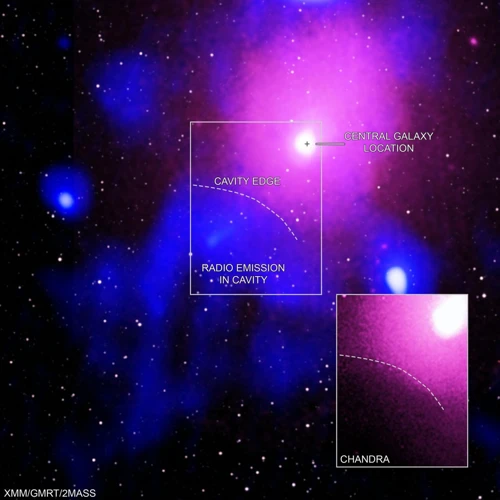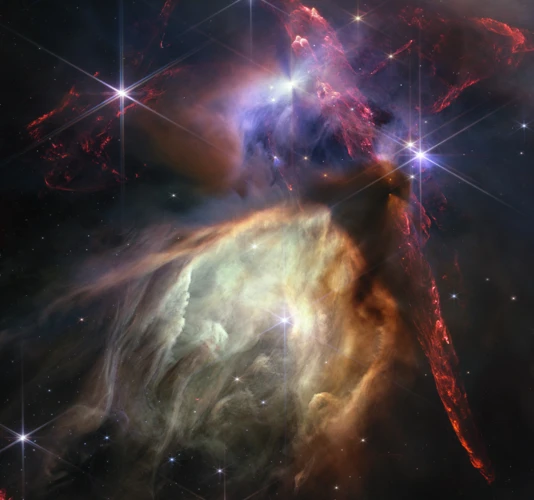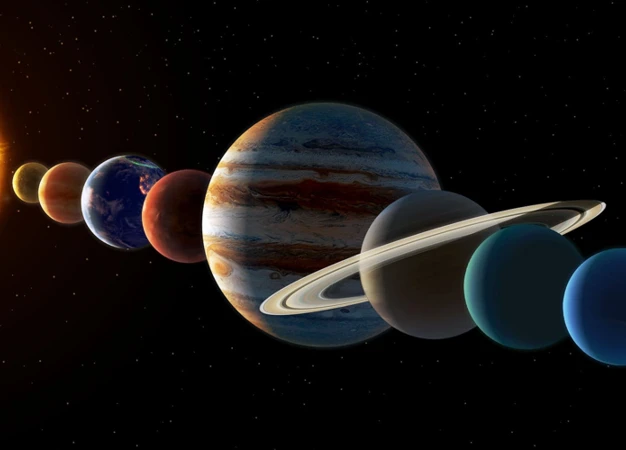Imagine a cosmic dance in the vast expanse of the universe, where planets align and their gravitational forces intertwine. This captivating phenomenon, known as planetary alignments, holds treasures of knowledge that have fascinated astronomers, scientists, and space enthusiasts for centuries. The role of planetary alignments in space exploration is a topic that evokes curiosity and wonder. In this article, we delve into the depths of this celestial occurrence, understanding its definition, historical significance, and its impact on space exploration. Join us on a journey beyond our world, where the alignment of planets holds the key to unlocking the mysteries of the cosmos.
Contents
- Understanding Planetary Alignments
- Historical Significance
- Impact on Space Exploration
- Current and Future Applications
- Conclusion
-
Frequently Asked Questions
- 1. What is a planetary alignment?
- 2. How often do planetary alignments occur?
- 3. Why are planetary alignments important?
- 4. Can planetary alignments affect Earth?
- 5. How do planetary alignments affect space missions?
- 6. Are planetary alignments predictable?
- 7. Can planetary alignments be seen with the naked eye?
- 8. Are there any historical records of ancient civilizations observing planetary alignments?
- 9. Do planetary alignments have any astrological significance?
- 10. How are planetary alignments utilized in current and future space exploration?
- References
-
Frequently Asked Questions
- 1. Are planetary alignments a common occurrence in space exploration?
- 2. How do planetary alignments benefit space missions?
- 3. Can planetary alignments affect interplanetary communication?
- 4. Do ancient civilizations observe planetary alignments?
- 5. How often do planetary alignments occur?
- 6. Can planetary alignments affect the trajectory of spacecraft?
- 7. How do planetary alignments impact fuel efficiency in space missions?
- 8. What are launch window opportunities in relation to planetary alignments?
- 9. Can planetary alignments impact resource utilization in space exploration?
- 10. How do spacecraft maneuverability benefit from planetary alignments?
- References
- Read More
Understanding Planetary Alignments

The realm of planetary alignments is a fascinating domain, shrouded in enigmatic beauty. Understanding planetary alignments requires us to delve into its intricacies and unlock the secrets it holds. These alignments occur when celestial bodies, such as planets, moons, and other astronomical entities, align in a specific pattern or arrangement. Through the gravitational interactions between these bodies, their positions relative to one another become synchronized, creating a mesmerizing spectacle in the night sky. The study of planetary alignments plays a crucial role in various disciplines, including astronomy, astrophysics, and space exploration. It offers valuable insights into the mechanics of our solar system, aiding in the analysis of celestial events such as eclipses, transits, and even astrological interpretations. To truly comprehend the significance of planetary alignments, we must explore their definition, their importance in scientific endeavors, and the frequency at which they occur. So, let us embark on this celestial journey and unravel the mysteries of the cosmos.
1. Definition
A clear understanding of the definition of planetary alignments lays the foundation for comprehending their significance in space exploration. Planetary alignments occur when two or more celestial bodies in our solar system appear to line up along the same or similar plane as observed from a particular vantage point. These alignments can involve planets, moons, asteroids, and other astronomical objects. The alignment can be categorized based on their orientation, such as conjunction (when celestial bodies appear close together), opposition (when they appear on opposite sides of the sky), or elongation (when they appear at their maximum angular separation).
The phenomenon of planetary alignments is a consequence of the gravitational interactions between celestial bodies, which determine their relative positions in space. These alignments can occur within the same planetary system, such as the alignment of the inner planets (Mercury, Venus, Earth, and Mars), or between different planetary systems, such as the alignment of planets in the solar system with respect to a distant star.
Analyzing the sun, moon, and rising sign in astrology provides insights into the impact of planetary alignments on individual horoscopes and personality traits. In an astronomical context, these alignments have a profound impact on the behavior of celestial bodies, influencing their gravitational pull, tidal forces, and even potential for celestial events like eclipses. By studying these alignments, scientists can gain a deeper understanding of the dynamics of the solar system and the broader universe.
2. Importance
The importance of planetary alignments in the realm of space exploration cannot be overstated. These celestial events serve as crucial navigational markers for spacecraft and provide valuable opportunities for mission planning and execution. Planetary alignments allow scientists and engineers to chart interplanetary trajectories, taking advantage of the gravitational interactions between celestial bodies to optimize fuel efficiency and reduce travel time. By carefully timing missions to coincide with favorable alignments, spacecraft can take advantage of gravitational assists, slingshotting around planets to gain momentum and achieve greater speeds. Planetary alignments facilitate precise spacecraft maneuverability, enabling scientists to plan intricate orbital transfers and trajectory adjustments. This precise control over spacecraft movements would not be possible without a deep understanding of the dynamics of these alignments. The importance of planetary alignments lies in their ability to guide, optimize, and enhance space exploration missions, making them a vital aspect of our endeavors to unlock the secrets of the universe.
3. Frequency
The frequency of planetary alignments is a captivating aspect that adds to its allure and scientific significance. These alignments occur at varying intervals, determined by the orbital periods of the planets involved. Each planet in our solar system has its unique orbital time, resulting in distinct frequencies of alignment. For example, the alignment of the inner planets (Mercury, Venus, Earth, and Mars) occurs more frequently than the outer planets (Jupiter, Saturn, Uranus, and Neptune). The inner planets have shorter orbital periods, which brings them into alignment more often. On the other hand, the alignment of the outer planets is a rare occurrence due to their longer orbital periods. Interestingly, some alignments are more extraordinary than others. For instance, the conjunction of the planets Jupiter and Saturn, known as the Great Conjunction, happens approximately once every 20 years. Alignments involving multiple planets in precise configurations are even more infrequent and are regarded as extraordinary celestial events. The frequency of planetary alignments provides scientists and astronomers with opportunities to study the dynamics of our solar system, explore the gravitational interactions between celestial bodies, and gain insights into the formation and evolution of planetary systems. By observing and analyzing these alignments, researchers can deepen our understanding of the cosmos and uncover its infinite wonders.
Historical Significance

Throughout history, planetary alignments have captivated civilizations and played a significant role in shaping our understanding of the cosmos. Ancient cultures observed these alignments with awe and attributed them to supernatural or mystic forces. Archaeological evidence reveals that civilizations like the Egyptians, Mayans, and Greeks closely monitored celestial events, including planetary alignments. Their observations not only contributed to the development of early astronomy but also guided their religious and cultural practices. For instance, the alignment of celestial bodies was utilized to determine auspicious times for significant events, such as the construction of temples or the prediction of harvest seasons. Similarly, sailors and navigators relied on planetary alignments to chart their course across vast oceans. The historical significance of planetary alignments extends beyond mere observations; it encompasses the foundations of human civilization, cultural beliefs, and even practical applications. Understanding the historical context of these alignments unravels a rich tapestry of human exploration, knowledge, and ingenuity, paving the way for our modern understanding of the universe.
1. Ancient Observations
Throughout history, ancient observations of planetary alignments have captivated civilizations and influenced their understanding of the cosmos. Ancient cultures, such as the Maya, Egyptians, and Greeks, keenly observed the movements of celestial bodies, including planetary alignments, and associated them with their religious, cultural, and agricultural practices. These early civilizations believed that planetary alignments held significant meaning and could influence human affairs. For example, the alignment of the Sun, Moon, and rising zodiac sign was thought to impact an individual’s personality traits and destiny. The Mayans, renowned for their advanced astronomical knowledge, incorporated planetary alignments into their intricate calendars and used them to predict celestial events, such as eclipses. Such observations not only deepened their understanding of the cosmos but also fostered a reverence for the mysteries of the universe. Today, we can appreciate the legacy of these ancient observations, which laid the foundation for our modern exploration of space. Through the lens of space telescopes and the wonders they have revealed about exoplanets and distant galaxies, we continue to build upon the astronomical wisdom passed down to us from these early civilizations. Understanding planetary alignments allows us to connect with our rich historical heritage and gain insights into the profound influence of celestial phenomena on human culture and beliefs.
The alignment of planets not only captivates our imagination but also offers significant navigational benefits for space exploration. Navigational benefits arise from the ability to use planetary alignments as guideposts for spacecraft trajectories. By taking advantage of the gravitational interactions between celestial bodies, space scientists and engineers can plot more efficient routes through space. These alignments provide opportunities for gravity assists, where a spacecraft uses the gravitational pull of a planet to gain speed or alter its trajectory. Gravity assists can result in fuel savings and reduced travel time, allowing for more ambitious missions to be undertaken. Additionally, planetary alignments can help establish reference points for spacecraft navigation, aiding in the accuracy of trajectory calculations. The knowledge of these alignments allows mission planners to take advantage of optimal launch windows and align spacecraft trajectories with precision. The navigational benefits of planetary alignments have been invaluable in past space missions, and they continue to play a vital role in shaping the future of space exploration.
3. Interplanetary Trajectories
Interplanetary trajectories, as the name suggests, encompass the paths taken by spacecraft as they navigate through the vastness of space, traveling from one celestial body to another. The study of planetary alignments plays a vital role in determining and optimizing these trajectories. When planets align in a favorable configuration, it can significantly impact the efficiency of interplanetary travel. (Internal link: analyzing the sun, moon, and rising zodiac). By taking advantage of these alignments, space agencies and mission planners can save valuable resources, such as fuel and time, while enabling spacecraft to reach their destinations with greater precision.
One key concept in interplanetary trajectories is the concept of gravity assists. When a spacecraft approaches a planet during a specific planetary alignment, it can utilize the planet’s gravitational pull to gain or lose momentum, altering its trajectory. This technique is commonly employed to increase the speed of the spacecraft or to modify its direction, allowing it to reach its intended destination more efficiently. By carefully selecting the appropriate planetary alignments, mission planners can chart complex flight paths, enabling spacecraft to traverse vast distances in the most efficient manner possible.
The timing of planetary alignments is crucial for interplanetary trajectories. The positions of the planets in their orbits play a significant role in determining when a spacecraft can launch, how long the mission will take, and the energy requirements for the journey. By strategically planning missions around specific planetary alignments, space agencies can ensure that spacecraft are launched at the most opportune moments, optimizing fuel efficiency and minimizing travel time. The alignment of planets can also influence the potential for future missions, as certain alignments may present greater opportunities for interplanetary exploration and resource utilization.
Interplanetary trajectories are intricately connected to planetary alignments. By studying and leveraging the alignments of planets, space agencies can design efficient flight paths, utilize gravity assists, and optimize mission timing for interplanetary missions. The synergy between planetary alignments and interplanetary trajectories opens up possibilities to explore our solar system and beyond with enhanced precision, efficiency, and resource utilization.
Impact on Space Exploration

The impact of planetary alignments on space exploration is profound, shaping the way we journey through the cosmos. These cosmic alignments influence mission planning and timing, providing opportunities for strategic launch windows and efficient travel routes. By taking advantage of optimal alignment configurations, spacecraft can conserve fuel and reduce travel time, maximizing efficiency and cost-effectiveness. Additionally, planetary alignments play a crucial role in spacecraft maneuverability, allowing for precise course corrections and trajectory adjustments. With careful calculations and astute utilization of planetary alignments, space agencies can navigate their probes and rovers with precision, ensuring successful missions to distant celestial destinations. This interplay between planetary alignments and space exploration showcased in countless expeditions, from the Voyager missions to the exploration of Mars. As we continue to push the boundaries of human exploration, planetary alignments will remain a vital factor in our quest to unravel the mysteries of the universe.
1. Mission Planning and Timing
The role of planetary alignments in space exploration is particularly significant when it comes to mission planning and timing. The precise alignment of planets can have a profound impact on the trajectory and duration of space missions. As spacecraft travel through the vastness of space, their path is influenced by the gravitational forces exerted by celestial bodies. By strategically utilizing planetary alignments, mission planners can take advantage of gravitational assists or slingshots. These gravitational maneuvers allow spacecraft to gain or lose momentum, conserving precious fuel and enabling longer missions. For example, the Voyager 2 spacecraft utilized a planetary alignment known as the “Grand Tour” to visit all four outer gas giant planets in our solar system. The alignment of Jupiter, Saturn, Uranus, and Neptune allowed for a gravity-assist trajectory, significantly reducing travel time and mission costs. Planetary alignments also affect the launch windows for interplanetary missions. Launching during specific alignment configurations can optimize fuel efficiency and minimize travel time. Mission planners meticulously analyze these alignments to determine the most favorable launch opportunities and ensure a successful mission. Timely coordination of spacecraft launch, trajectory adjustments, and arrival at the destination are crucial elements in achieving mission objectives. Understanding and utilizing planetary alignments play a pivotal role in mission planning and timing, enabling ambitious space exploration endeavors to reach new frontiers and unlock the secrets of the universe.
2. Fuel Efficiency and Travel Time
Fuel efficiency and travel time are critical considerations in space exploration, and planetary alignments play a significant role in optimizing these factors. When planning interplanetary missions, scientists and engineers aim to minimize fuel consumption and reduce travel time to reach their destination. The alignment of planets can offer favorable conditions for spacecraft maneuvering and propulsion. For instance, a gravitational assist from a strategically aligned planet can provide a gravitational slingshot effect that boosts the spacecraft’s velocity, reducing the amount of fuel needed for propulsion. This technique, known as gravity assist or planetary flyby, has been successfully utilized in several space missions, including the Voyager missions and the Cassini-Huygens mission to Saturn. Additionally, the alignment of planets can create more direct trajectories, reducing the overall travel distance and time required to reach the intended destination. By taking advantage of these alignments, space exploration missions can optimize fuel efficiency and minimize travel times, enabling more extensive exploration of our solar system and beyond. To learn more about the fascinating possibilities enabled by space telescopes, you can read our article on the role of space telescopes in exoplanet exploration.
3. Spacecraft Maneuverability
The alignment of planets not only impacts mission planning and fuel efficiency but also plays a vital role in spacecraft maneuverability. When planets align in a favorable configuration, it opens up opportunities for more efficient trajectory adjustments and complex maneuvers. Spacecraft can take advantage of the gravitational forces exerted by these aligned planets to perform gravity assists or slingshot maneuvers, effectively utilizing the planetary alignment to conserve fuel and attain greater speeds. For example, the Voyager 2 spacecraft used a series of planetary flybys, including a gravity assist from Jupiter, to increase its speed and trajectory towards its ultimate destination, Uranus and Neptune. Alignments can also enable spacecraft to perform intricate orbital insertions and rendezvous maneuvers with celestial bodies, leading to more precise and successful missions. The maneuverability provided by planetary alignments enhances the capabilities of spacecraft, allowing for intricate space missions and exploration of distant celestial bodies. It showcases the profound influence that the alignment of planets has on the navigational capabilities of spacecraft, making space exploration a truly awe-inspiring endeavor.
Current and Future Applications

In the realm of current and future applications, planetary alignments hold immense potential for various aspects of space exploration and scientific endeavors. Harnessing the power of these cosmic dance routines, scientists and space agencies can optimize their missions and enhance our understanding of the universe. One key application lies in the strategic planning of launch windows. By strategically timing spacecraft launches to coincide with favorable planetary alignments, we can reduce fuel consumption and travel time, making interplanetary journeys more efficient and cost-effective. Another crucial application is interplanetary communication. Utilizing the alignment of planets as relay stations, we can establish efficient communication networks between Earth and distant spacecraft, enabling real-time data transmission and remote operations. Additionally, planetary alignments offer opportunities for resource utilization in space. By charting alignment patterns, we can identify potential locations for resource-rich asteroids or planetary bodies, paving the way for future extraterrestrial mining ventures. The possibilities that arise from this celestial phenomenon are limitless, offering tantalizing prospects for the future of space exploration and our understanding of the cosmos.
1. Launch Window Opportunities
The concept of launch window opportunities is a vital aspect of space exploration, dictating the ideal timeframe for launching spacecraft into space. A launch window refers to the specific period when conditions align favorably to launch a mission with maximum efficiency and success. Planetary alignments play a significant role in determining these launch windows. When Earth’s position aligns with the desired destination planet or celestial body, it creates a gravitational assist that minimizes fuel requirements and reduces travel time. For example, the Mars launch windows occur approximately every 26 months when Earth and Mars align in their respective orbits. This alignment allows for a more direct trajectory and optimized mission planning. Additionally, launch window opportunities also take into account factors such as the availability of communication networks, weather conditions, and alignment with other spacecraft or space stations. By carefully analyzing launch window opportunities, space agencies can maximize the chances of mission success, minimize costs, and optimize fuel efficiency. It is a delicate balance of timing and celestial alignment that ensures the smooth execution of space missions, pushing the boundaries of human exploration further into the cosmos.
2. Interplanetary Communication
Interplanetary communication represents a significant challenge for space exploration, as it involves transmitting and receiving signals over vast distances within the solar system. The alignment of planets plays a crucial role in facilitating effective communication between spacecraft and missions. When planets align in a specific configuration, they can create a “line of sight” communication path, allowing signals to travel more efficiently. For example, during a Mars mission, when Earth and Mars align favorably, it allows for better signal reception and transmission, enabling scientists and engineers to communicate with rovers and orbiters in near real-time. This alignment reduces the signal delay caused by the vast distances involved in interplanetary communication. Planetary alignments can also provide opportunities for gravity assists, where spacecraft can utilize the gravitational pull of a planet to enhance their trajectory and conserve fuel, enabling them to reach their destinations more efficiently. In the future, as space exploration expands to include more distant destinations, such as outer planets and their moons, the role of planetary alignments in interplanetary communication will continue to be vital. Embracing these alignments and optimizing communication strategies will allow us to push the boundaries of our understanding and exploration of the cosmos.
3. Resource Utilization
Resource utilization is a vital aspect of space exploration, and the role of planetary alignments in this regard cannot be underestimated. When planets align in space, it opens up possibilities for efficient resource utilization during missions. One significant resource that can be leveraged through planetary alignments is the gravitational assist or slingshot effect. This technique involves utilizing the gravitational pull of a planet to increase or decrease the speed of a spacecraft, conserving precious fuel in the process. By carefully planning and timing missions to coincide with favorable planetary alignments, spacecraft can take advantage of these gravitational assists, enabling them to travel longer distances with less fuel. This not only improves the overall efficiency of space missions but also reduces costs and extends the lifespan of spacecraft. Additionally, planetary alignments can facilitate the exploration and utilization of celestial resources. For instance, aligning with a planet that has abundant resources such as water or minerals can enable the extraction and utilization of these resources for sustenance and fuel production during long-duration missions. By strategically aligning with planets that offer valuable resources, space exploration endeavors can become more self-sustaining and economically feasible. Thus, resource utilization through planetary alignments holds immense potential for advancing space exploration and ensuring the success and sustainability of future missions.
Conclusion

In Conclusion, planetary alignments hold both scientific and practical significance in the realm of space exploration. Through their study, scientists have gained a deeper understanding of the mechanics of our solar system and the gravitational forces at play. The historical significance of planetary alignments is evident in ancient observations, where civilizations used these celestial events for navigation and cultural interpretations. In the realm of space exploration, planetary alignments play a crucial role in mission planning and timing, allowing scientists to optimize fuel efficiency and travel time. These alignments also impact spacecraft maneuverability, enabling precise trajectories and reducing the need for excessive course corrections. Looking to the future, planetary alignments will continue to find applications in launch window opportunities, interplanetary communication, and resource utilization. As we unlock more knowledge about our celestial neighbors and their alignments, our ability to explore the cosmos will expand. Embracing the interplay of celestial bodies and their alignments, we embark on a never-ending quest to uncover the mysteries of the universe.
Frequently Asked Questions

1. What is a planetary alignment?
A planetary alignment is a phenomenon where celestial bodies, such as planets, moons, and even the sun, appear in a straight line or a specific configuration in the sky.
2. How often do planetary alignments occur?
Planetary alignments occur at different frequencies depending on the specific alignment and the planetary bodies involved. Some alignments may occur once every few years, while others may take centuries.
3. Why are planetary alignments important?
Planetary alignments are important because they provide insights into the dynamics of celestial bodies and their gravitational interactions. They help scientists study the mechanics of our solar system and can influence various aspects of space exploration.
4. Can planetary alignments affect Earth?
While planetary alignments do not directly impact Earth in a significant way, they can have subtle effects on the planet’s tides and possibly weather patterns. However, these effects are usually minimal.
5. How do planetary alignments affect space missions?
Planetary alignments play a crucial role in space missions by affecting mission planning, timing, fuel efficiency, and spacecraft maneuverability. They can provide favorable launch windows and optimize interplanetary trajectories.
6. Are planetary alignments predictable?
Yes, planetary alignments are predictable to some extent. Scientists use mathematical models and astronomical calculations to forecast when certain alignments will occur, allowing for long-term mission planning and scientific observations.
7. Can planetary alignments be seen with the naked eye?
Yes, many planetary alignments can be observed with the naked eye. However, some alignments may require telescopes or specialized equipment for better visibility and analysis.
8. Are there any historical records of ancient civilizations observing planetary alignments?
Absolutely! Ancient civilizations such as the Mayans and the Egyptians had keen astronomical observations and left behind records of planetary alignments. These observations often played significant roles in their religious, cultural, and agricultural practices.
9. Do planetary alignments have any astrological significance?
While some people believe that planetary alignments have astrological impacts, scientific research has not provided concrete evidence to support these claims. The study of planetary alignments primarily falls under the domain of astronomy rather than astrology.
10. How are planetary alignments utilized in current and future space exploration?
Planetary alignments are utilized in various ways in space exploration. They aid in optimizing launch windows for missions, enabling fuel-efficient transfers between planets, and facilitating interplanetary communication. Additionally, they contribute to resource utilization and potential future colonization efforts.
References
- NASA Satellites Ready When Stars and Planets Align
- A stunning lineup of five planets will decorate the night sky
- When do the planets in our solar system all line up?
Frequently Asked Questions

1. Are planetary alignments a common occurrence in space exploration?
Yes, planetary alignments are a relatively common occurrence in space exploration. They happen when two or more planets align in a straight line, either in the same plane or in a nearly straight line. However, not all alignments have the same significance.
2. How do planetary alignments benefit space missions?
Planetary alignments offer several benefits to space missions. They can provide opportunities for mission planning and timing, fuel efficiency, and spacecraft maneuverability. By taking advantage of these alignments, space agencies can optimize their missions and achieve more efficient and cost-effective interplanetary travel.
3. Can planetary alignments affect interplanetary communication?
Yes, planetary alignments can have an impact on interplanetary communication. During certain alignments, the alignment of planets can cause interference or signal delays in long-distance communication between spacecraft and mission control. This needs to be considered when planning and executing missions.
4. Do ancient civilizations observe planetary alignments?
Absolutely! Ancient civilizations were keen observers of the night sky and documented numerous planetary alignments. These observations played a significant role in shaping their understanding of the universe and served as a basis for religious and cultural practices.
5. How often do planetary alignments occur?
The frequency of planetary alignments can vary depending on the specific alignment being considered. Some alignments, such as the conjunction of two planets, can occur quite frequently, while others, such as a grand alignment involving multiple planets, may be rarer and occur once in several decades.
6. Can planetary alignments affect the trajectory of spacecraft?
Yes, planetary alignments can have a significant impact on the trajectory of spacecraft. By utilizing gravity-assist maneuvers during specific alignments, space agencies can adjust the trajectory of spacecraft, enabling them to reach their destination in a more efficient and timely manner.
7. How do planetary alignments impact fuel efficiency in space missions?
Planetary alignments can influence fuel efficiency in space missions by allowing spacecraft to take advantage of gravity-assist maneuvers and sling-shot effects. By utilizing the gravity of aligned planets, spacecraft can save fuel by gaining speed and momentum without using onboard propellant.
8. What are launch window opportunities in relation to planetary alignments?
Launch window opportunities refer to the specific timeframes when a spacecraft can be launched to take advantage of planetary alignments. These windows provide the optimal conditions for launching a mission, considering factors such as fuel efficiency, trajectory, and mission objectives.
9. Can planetary alignments impact resource utilization in space exploration?
Absolutely! Planetary alignments can impact resource utilization in space exploration. For example, by strategically planning missions to take advantage of alignments, space agencies can optimize resource utilization by reducing travel time, minimizing fuel consumption, and accessing planetary resources more efficiently.
10. How do spacecraft maneuverability benefit from planetary alignments?
Spacecraft maneuverability can benefit from planetary alignments by using gravity-assist techniques and trajectory adjustments made possible by these alignments. By carefully navigating through specific alignments, spacecraft can conserve fuel and navigate through complex interplanetary trajectories with greater efficiency.







